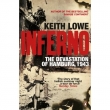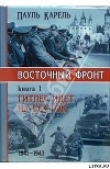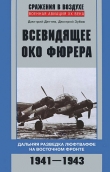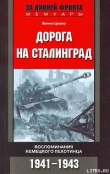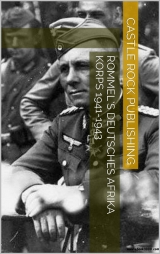
Текст книги "Rommel's Deutsches Afrika Korps 1941-1943"
Автор книги: Автор Неизвестен
Жанры:
История
,сообщить о нарушении
Текущая страница: 3 (всего у книги 19 страниц)
The inclusion of the 8.8cm in their armoury ensured that the outcome of such a battle was nearly always victory for the artillery and so effective was that gun that it may be claimed with some accuracy that the German success at Gazala was built upon the forty-eight 8.8cm pieces which Rommel had under command. There were two other first-class anti-tank guns on the German establishment, the 5cm and the Russian 7.6cm, the latter considered to be the best anti-tank gun in the world.
Another of the advantages enjoyed by the Germans was that their anti-tank guns and their tank guns could fire high explosive as well as solid shot. Thus their guns could bring fire to bear upon the British anti-tank gun line and by high explosive shells destroy it or at least neutralise it. It was not until the summer of 1942 with the introduction of the 6-pounder anti-tank gun and the Grant tank gun, both of which pieces fired high explosive in addition to armour piercing shot, that 8th Army was able to deal effectively with the Axis anti-tank gun lines.
Against the three first-class German anti-tank guns the British could oppose at first only with the 2-pounder, a weapon of such poor performance that it could only be fired with hope of penetration against the thinner side plates of enemy armour at ranges below 200 yards. Being thus almost totally ineffective this weapon could neither support a British tank assault nor could it defend infantry against panzer attack. To act as an anti-tank gun the 25-pounder was pressed into service and weapons were taken from their main task, that of supplying protection for the foot soldiers. Being therefore without proper artillery support the British infantry relied for protection upon the armour and this restriction bred among the tank units the feeling that they were being prevented from achieving their prime purpose – manoeuvre – by being tied down to the foot troops. The infantry, on the other hand, was convinced that the armour deserted it in time of need.
The German armour depended upon the two main types Panzer III and IV and during the years of campaigning these were up-gunned and up-armoured so that their already great capabilities were enhanced and their effectiveness increased. Both of these types were capable of subduing any tank which the British could put into the field. On the British side the Matilda was a slow vehicle with a maximum speed of 16mph and a main armament of the 2-pounder gun; the Matilda was to all intents and purposes defenceless. The Grant tank which came into the battle at Gazala, during the summer of 1942, helped in part to restore the imbalance through its 7.5cm gun, but this weapon had only a limited traverse and was set too low in the hull. Thus the Grant could not take a 'hull down' position but had to expose itself almost completely in order to fire its main armament.
German attacks against British positions followed a battle drill. A preliminary reconnaissance would determine the sector to be attacked and an armoured thrust would be made to divert attention from the main thrust. This main effort would be made by several 'boxes' of tanks which would advance at a given speed with carefully regulated intervals between the individual tanks and the individual 'boxes'. The assault would roll forward and by a combination of fire and movement the position would be taken. Once this had happened a gun line would be formed to protect the flank while the panzers pressed the attack forward.
Reconnaissance was of the pattern common on European battlefields and in the early months Panzer II vehicles were used to screen the front and flanks of a battle formation. These lightly armoured and undergunned, obsolete vehicles were pushed forward of the main body about 8 miles, that is to the extreme range of their wireless sets. Up with the forward reconnaissance detachments was also a small but highly specialised group whose task it was to listen to wireless messages which passed between the British armour and its commanders, and to lay this intelligence before the divisional commander so that the direction and size of British thrusts could be countered.
The movement of Axis supply columns was made difficult by British patrols; one German report warned that not even the tracks behind their own lines could be considered as absolutely safe from enemy attack, and for a short time a convoy system was introduced. A continual problem had been the delay which occurred while the fighting group waited for its supplies of fuel and ammunition to catch up, and to overcome this a number of soft-skinned vehicles loaded with these essential supplies travelled with the battle group and were protected from attack by being held in the middle of the divisional box. An officer of the quartermaster's department was attached to tactical headquarters, forward with the battle group, and was linked by radio to the main quartermaster's department back at Corps.
In the fast-moving fighting on the desert battlefields the problems which usually confronted a military commander were increased and the difficulties of fighting a modern battle from the rear, which had been encountered even in the slow-moving days of the early campaigns in Europe, proved impossible to resolve in Africa. Situations arose which demanded immediate solutions. It was, therefore, essential that not only the divisional commander but the whole of his tactical headquarters, the forward observation officer for the artillery, and the panzer regiment's commander be well forward to control and to direct operations. The whole command echelon was carried in special armoured vehicles. It was also essential that the elaborate communications procedures which had obtained in Europe be simplified and for this purpose the divisional commander's vehicle was fitted with an ultra short-wave radio so that he could both listen in to the orders being given to the panzer regiment and give his own instructions direct, without going through the standard but time-wasting practices. The remainder of the leading group as well as all the other boxes listened in on the medium-wave band and were directly linked with the divisional commander. Thus he could deploy his forward units and coordinate the panzer assault with that of the supporting arms in the rear boxes. Between the divisional reconnaissance groups and headquarters there was a signals link mounted in an armoured vehicle. A simple system of set pattern orders made the transmission and execution of battlefield manoeuvres a speedier process than had been the case in Europe and constant practice of the manoeuvres as well as of other battle drills reduced time-wasting and in the artillery units enabled these to go into action with surprising speed. [3]
The presence of generals, even of the Corps commander himself, upon the battlefield not only speeded up decision making but improved the morale of the fighting soldier for he could see for himself that the commanders were undergoing the same privations and sharing the dangers of battle with him. To the German front line soldier in Africa the generals were not shadowy figures in a headquarters miles removed from the fighting but were physically present upon the field of battle. This personal presence helped to produce a good esprit de corps. By contrast the Italian and British High Commands were remote and their decisions arrived at usually after staff conferences had often been overtaken by events leaving new crises to be resolved. It was not uncommon for Rommel or indeed any senior commander to take over the direction of a battalion in battle, a situation which may not have been very comfortable for regimental officers but did produce results. It is recorded that once, at Mechili, while flying over his advancing columns Rommel saw a unit halted for no apparent reason and radioed to the officer commanding that unless the advance was renewed he would land his Fieseler Storch and take over command. The unit moved on.

Erwin Rommel
The personality of Erwin Rommel dominated not only the Axis armies but, indeed, the whole African campaign. As a young officer during the First World War he had been awarded the highest German decoration for bravery, the Pour le Merite, for an action on the Italian Front and in the inter-war years he had produced a number of text books on infantry tactics. After serving as commander of Hitler's Escort Battalion in Poland Rommel had mken over command of 7th Panzer Division and in a most determined way had converted the minor role of his division into the spearhead of the panzer force which defeated the western Allies during 1940. Hitler had personally chosen Rommel to command the Africa Corps and was to have his faith justified.
If only Rommel's faith in Hitler had met with the same loyalty then, there is no doubt that the Axis powers would have been strategically successful in the nghting in Africa but Rommel was the victim of his superiors. The supplies hich they promised him either never arrived at all or were reduced in number before they reached Africa. He was to see artillery pieces of new and startling power, which had been promised to him, sent to the 5th Panzer Army in Tunisia. His armies were halted when the flow of petrol stopped, the artillery ceased firing for lack of ammunition, the tanks he asked for were diverted to other fronts, and against all these breaches of faith he could make no protest for he was entangled in an extraordinary hierarchy of command.
Africa was an Italian theatre of operations and Rommel as commander of only the mobile forces of the desert army was subordinate to an Italian general. Then the person of Kesselring, the German Supreme Commander South was interposed and the Commando Supremo in Rome was often in accord with Kesselring's points of view. Between Rommel and Hitler there also stood the OKH and the OK.W, not to mention Benito Mussolini who was not only the de facto Head of the Italian State but also a personal friend of Hitler.
Each and all of these layers of obstruction prevented Rommel from achieving the objectives which he had set himself and his men. He was a tireless soldier and demanded of his troops the same indifference to hard conditions and to privations that he himself had. He drove his men hard and his vehicles to the limits of their endurance, allowing his soldiers little tune for rest and his panzers less than adequate time for maintenance. His whole attention was concentrated upon the objectives of righting and winning the desert war. Not for him the problems of logistics and the difficulties of supply. His attitude to his desert quartermasters can be best summed up in the plea which Churchill made on another occasion, 'Give us the tools and we shall finish the job'. But for the greater part of his service in Africa Rommel was bedevilled by two factors which negated the victories which he won and prevented him exploiting the successes which had been achieved. The first of these was a lack of supplies and the second was the over elaborate command structure which allowed him no freedom of action or of manoeuvre.
Rommel led his men from the front and the charge that he neglected staff duties to direct operations personally is a valid one but the peculiar conditions of desert warfare demanded the presence of a taskmaster on the battlefield.
He was a poor subordinate and like Nelson preferred not to see – or in his case hear – the orders, warnings, and injunctions which his superiors at every level of command gave him on the conduct of operations. With the ebb of the Axis tide at El Alamein in October 1942 the Commando Supremo had its revenge upon the man who had come to the desert and had made it an area which bore the imprint of his military genius. Demands for his resignation were made each time his understrength armies were forced from one untenable position to another. And always he had to face the lack of supplies, the unkept promises, the demands to carry out some other task above the capabilities of his armies until at last he returned to Hitler to make one more desperate plea for supplies that would enable a bridgehead in Tunisia to be held. Flamboyantly, Hitler promised Rommel that he would lead an Axis army against Casablanca – so little knowledge of the true situation did the German leader have – and with that Rommel had to be content. He never returned to Africa and thus avoided seeing the Army which he had so often led into victories pass into the bitterness of final defeat.
The Italians
It is not the purpose of this book to dwell upon the defects of the Italian Army in general or upon the faults of those Corps and divisions, in particular, which fought the campaign in Africa. There can, however, be no doubt that the Italian service was weak, badly led, and poorly armed and equipped. Mussolini may have boasted that behind him stood eight million Fascist bayonets but this was oratory and not fact, for even had he had eight million men there would not have been the arms available to outfit them. Italy had prepared her Army in the early 1930s and when her infantry and tank arms went into battle against the British they did so equipped with obsolescent weapons and were fully aware of their inferiority vis-a-vis their enemies. For the Italian Army to have fought at all knowing of the British crushing superiority would have been sufficient; that they fought for three years is a memorial to their incredible endurance and bravery.
From the highest level down to that of junior commanders the structure was defective. The whole system of messing was completely wrong and the Germans were astonished at the disparity in ration scales between the Italian commissioned ranks and the men they led. The officers ate first and best; the men last, badly, and sometimes not at all. The officers lived almost at a peace-time level. There was even a mobile brothel in a large caravan. The comradeship of danger shared was missing; a sense of purpose was absent. The Italian Army lacked spirit and with the defeat by Wavell only weeks before the first German troops found the morale of their allies to be dangerously low. The Italians had such an inferiority complex about the ability of the British that many considered any attempt at defence to be worse than useless.
Whereas it was common in the German Army for commanders to be well forward leading their men, the Italian leaders seldom left their headquarters and thus had no direct and immediate influence upon the course of a battle. There was little, or as good as no, wireless or telephone communication between units and their commanders; higher echelons generally depended upon a system of liaison officers for the relay of orders.
The organisation of the supply system showed many defects and the whole edifice was predicated on the assumption that war in the desert would be a static campaign, although no effort had been made to erect proper and permanent defences. The Italians had been in Libya for nearly thirty years and had settled down into a comfortable routine of life which only an occasional campaign against tribesmen had disrupted. Against the poorly armed locals the Italians and their old-fashioned equipment had been adequate, but against the British they had not prevailed. When Wavell's forces swept over them and forced them out of the fertile strip to fight a mobile war in the desert, the Italian forces were completely unready. They had never had to fight against the desert; they had ignored it and had lived in the fertile area. Wavell coming up out of the blue of the sand sea had confounded them and it was this total inability to cope with two enemies – the desert and the British -that had led an Army ten times the size of its military opponent to be defeated so quickly.
Even with a supply system based on the expectation of a static war the Italians had built up no stocks. There was no pool of vehicles to create a mobile Army and this in a region where mobility equalled life and to be immobile was to be overtaken and destroyed. No properly equipped supply depots had been filled, no fuel reserve built up, no dumps of ammunition created and filled; there was nothing, in fact, which a modern Army serving overseas needed to sustain it. And then, too, the arms themselves were inferior. The field artillery's weapons were mostly pieces from the First World War, the anti-tank guns were incapable of dealing with British armour, and the Italian armoured fighting vehicles were so weak both in thickness of armour and in their main weapon that they were, to all intents and purposes, defenceless targets when set up against the British tank Corps.
Tactically the Italian Army of March 1941 was made up of two Corps. The first of these, X Corps had two infantry divisions Bologna and Pavia, as well as a mixed unit of all arms. In support of X Corps was the remnant of Ariete armoured division with at least 60 tanks. The XXI Corps was made up of Savona and Brescia infantry divisions as well as a mixed group formed from the remaining elements of other divisions which had been badly hit during the fighting in the desert.
British Army
The armies which fought in the North African desert campaigns were initially made up solely of men from the United Kingdom, the Empire, and the Commonwealth. Many of those soldiers who had driven back the Italians during 1940 were professionals who had garrisoned the Middle East in peace-time and who had mapped the desert, plotted routes, explored the sand seas, and produced the splendidly accurate maps on which every important piece of information was marked.
Then in support of these veterans came the territorial and yeomanry units and then a greater number of men who had been conscripted to serve their country. But whatever the reason which had brought them to the desert for many of the years during which they served, their skill and bravery were wasted in offensives – ordered by politicians in London – using equipment that was at best unsuitable and at worst totally useless.
In artillery the British had one particular type of gun, the 25-pounder, which was a first-class weapon but the rest of the military ordnance was made up of pieces dating from the First World War.
In anti-tank weapons the 2-pounder gun which formed the bulk of this type of artillery for the first two years of the war had been proved to be useless against German armour as sarly as 1940, but was still lauded as an effective panzer killer as late as 1942 although mainly by civilians who did not have to use it. Not until the 6-pounder came into service did the British Army have an anti-tank gun that could kill enemy tanks at a respectable distance, but this weapon did not arrive in the Middle East until early 1942 and ammunition which was able to penetrate the steel plates of the un-armoured panzers was not available until after the battle of Alam Haifa in September 1942. True the workshops of the Royal Army Ordnance Corps had tried to overcome the disability of unsuitable ammunition by converting 7.5cm shells into armour piercing shot, in time for the Gazala battles, but little of this ammunition seems to have been used.
The British armoured righting vehicles were generally ineffective. The Crusader, whose weaknesses had been the subject of a parliamentary enquiry, was found to be not only mechanically unsound but also poorly armoured. Its highest cross-country speed was 12mph, but even this was twice as fast as the Matilda, which had been designed purely as an infantry support tank. The Valentine, like the two vehicles already mentioned, was armed with the ineffective 2-pounder tank gun which fired only solid shot and was, therefore, unable to engage and destroy the German anti-tank gun lines except by a direct hit. Not until the battle of Gazala and the introduction of the American Grant tank did the British Army in North Africa have a tank which combined the advantages of fire power, armoured thickness, and speed. The Grant was able to fire both high explosive and solid shot. Its 7.5cm main armament was a standard artillery piece and the turret-mounted 3.7cm high velocity gun fired armour piercing shells. Even this machine had a defect; the main armament was set low down in the hull and thus the whole machine had 10 be exposed to enemy fire whenever the main armament was used.
Although for much of the time the 8th Army had superiority in numbers the poor designs, weak armouring and armament of the armoured fighting vehicles reduced the advantage. Then, too, tank units were used incorrectly. There was no real understanding of the use of mass forces and regiments were allowed to carry out isolated and, generally, unsupported 'cavalry' charges against gun lines and not until Alam Haifa, when Montgomery had taken over command of 8th Army, were tank commanders restrained and forbidden to act as if the panzers were a sort of quarry, like a fox in some sort of mechanised hunt.
At the end of February 1942 there were certain changes made in the armoured units and an attempt was made to 'tighten up' the formations. The armoured brigade group became the standard battle formation and replaced the armoured brigade which had formed part of the armoured division. Within the brigade group establishment there were artillery and engineer units taken from the former support group which, with the new regrouping, had been scrapped. The anti-tank gun regiments which had been with 8th Army, were broken up and distributed among the field artillery regiments. Thus, each artillery regiment controlled not only three batteries of 25-pounder howitzer guns but also 16 anti-tank guns. To provide anti-aircraft protection the light anti-aircraft gun batteries were disbanded and the batteries allotted to each brigade group. It was hoped that these new all-round units would provide the cohesion and the dynamism which characterised the German battle groups but they failed, because they were never large enough to be effective against German armour moving in mass, nor was the British command structure sound.
The direct and immediate control of the battle, essential in armoured warfare, was lacking in 8th Army. The structure was too loose, was too far removed from the scene of the battle, and was too slow for decisions arrived at were usually the result of long discussions. At intermediate command level there was great freedom of action and at divisional level the group was quite firm. At brigade and in lower echelons there was a great deal of professionalism, determination to succeed, and tenacity. This was particularly true of the infantry formations which comprised the bulk of the Army.
It is wrong to make comparisons between fighting units of the same army and in the case of 8th Army it is almost impossible for it contained such first-class units as 9th Australian Infantry, 2nd New Zealand Infantry, and the first class 4th Indian Divisions.
British military power rose from two divisions in 1940 to a strength of six by May 1942, and then to nearly a dozen by April 1943. When 8th Army entered Tunisia it linked with Anderson's 1st Army which had begun operations with only one infantry brigade and a weak Allied tank force but which ended the campaign with an Allied army made up of men of three different nations. For it must be remembered that in addition to the British and Imperial troops, American divisions, French units, Polish and Greek Brigades had also fought in Africa. When one considers the Allied battle line then one becomes aware of the terrible odds which faced the army of Erwin Rommel and its Italian allies.
Rommel arrives to Africa
It is a military truism that supply services must be established, lines of communication laid out, and depots set up before combat operations can begin, for without these fundamentals a fighting force is restricted either to that which it can carry or to being forced to live off the land. The first German troops which debarked in Tripoli on 11 February 1941, were, therefore, supply specialists and water purifying teams who immediately set about establishing store depots, ration, fuel, and ammunition points, and generally preparing the area for the arrival of the fighting troops.
The German combat units which were despatched to Africa were the only Axis soldiers which could be considered as ready for battle and because the original task of the force had been foreseen as a blocking operation the group consisted principally of a number of machine gun battalions and anti-tank units. Artillery support was afforded by .a single motorised artillery battalion and the services detachments were a signals and an engineer company. At a later date 5th Panzer Regiment was to come under command and this addition of light and medium tanks increased the force's potency. A battalion of self-propelled (SP) anti-tank guns which arrived during March at the port of Tripoli was not taken on strength of 5th Light Division but had an independent role.
From 13 February onwards the combat troops began to arrive regularly; at first elements of 3rd Motorised Reconnaissance Battalion and 39th Anti-tank Battalion and then, during the first weeks of March the artillery and armoured fighting vehicles were unloaded. Although Hitler's name for the new unit was Africa Corps, it was not organised as such until a much later date and for a long time there were neither Corps troops nor supply columns and the second German division, 15th Panzer Division, which would have raised the group to Corps level was not expected to arrive in Tripoli until the beginning of May.
The military situation in those anxious February days was that the British had reached El Agheila and their armoured reconnaissance units had appeared to the west of that place. The Axis command had to anticipate the British intention. Would Wavell go on to capture Tripoli and to destroy not only the Italian Army but also a major part of the Italian Colonial Empire, or would time be given to Rommel and his battle-ready troops to establish a defensive line in the desert south of the gulf of Sirte? The Italians anticipated an early resumption of the offensive by Wavell's army, which they estimated to contain two armoured and three motorised divisions. The German commanders were less inclined to this appreciation for they reasoned that any advance by the British from El Agheila to Tripoli wouldjequire that Army to cover a distance of over 400 miles, the greatest part of which advance would be through a waterless and empty wasteland.
The British offensive, which had just smashed Graziani, had covered more than 800 miles and the losses of men and material which would have been incurred during that operation would have to be made good before the offensive could roll again. Then, too, there would be supply problems; for Wavell's lines of communication had been extended and any attempt to use the ports along the coast, in particular Benghasi, would be interrupted by the Luftwaffe whose Xth Afr Corps was now operating in Africa against British targets and which had begun to bomb Benghasi as early as 12 February.
Rommel first sent his troops to positions in the empty desert of the Sirte where they gave backbone to the Italians in that area and prepared to delay any British advance. On 16 February, 3rd Reconnaissance Battalion travelled 360 miles along the Via Balbia, took up position east of Sirte, and sent out patrols which made contact and drove off the British reconnaissance detachments near En Nofilia. This successful clash showed that the British had still not reached that area in any strength. The reconnaissance battalion then advanced to reconnoitre at Arco dei Fileni, some 100 miles to the east, where the tactical headquarters of 5th Light Division was established and to which the divisional units were directed to advance, once they had debarked in Tripoli.
The Brescia and Pavia Divisions were set to build defences in the Sirte around which Rommel formed a blocking line, set along the high ground approximately 20 miles west of El Agheila. The right wing of these positions was touching a salt marsh but, to guard the wide open, deep southern flank, patrols were sent to occupy the Marada Oasis, 80 miles south of El Agheila and Ariete Division was also positioned to give greater strength to the southern flank.
At the beginning of March, 5th Panzer Regiment arrived in Tripoli, held a ceremonial parade to show the flag, and moved up to the temporarily stagnant front. The Africa Corps was now strong enough to act offensively and could plan for the recapture of Cyrenaica. Rommel's original intention, to wait for the arrival of 15th Panzer Division before going over to the offensive, was discarded and now he urged Gariboldi, his superior officer, to bring the Italian divisions forward. Reluctantly Gariboldi agreed and released Ariete, the armoured division and the partly-motorised Brescia. Rommel then took this latter formation and put it into the line to relieve his German units.
On 23 March, after discussions with both Hitler and Mussolini, Rommel grouped his Corps and on the following day sent a battle group in to attack 8th Army reconnaissance troops in El Agheila. There was a short, fierce fire fight and the British withdrew closely pursued by the Germans. The next objective was the Marsa el Brega gap between the sea and the difficult country to the south. Even at this early stage in his new command Rommel had shown an independence in the conduct of his operations which often conflicted with the intentions and even the orders of his superiors -particularly those of General Gariboldi, a militarily timid man. He had intended the Marsa el Brega operation to be only a reconnaissance to establish British strength in that area. The attack, he had told Rommel, must not go in without his approval and even OKH had stressed caution for it did not anticipate that the Axis forces would have sufficient strength to reach Agedabia, the principal objective, before May. Africa Corps commander had other ideas and planned to capture Marsa el Brega by a pincer operation. The stronger of two columns, containing the panzer regiment, 3rd Reconnaissance Battalion, 8th Machine Gun Battalion, and elements from the anti-tank gun detachment, was to advance along the Via Balbia supported by artillery. The second column, made up of anti-tank guns mounted as SPs, together with 2nd Machine Gun Battalion was to outflank the British positions from the south and through this threat speed the assault of the main column.


